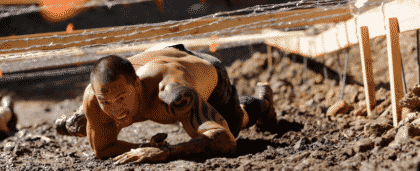Human Teeth vs. Animal Teeth
We’ve written a lot about our teeth in past blogs, but how do human teeth differ from animal teeth? Why are they are different?
Teeth are off white, very hard, and full of calcium – just like our bones. They aren’t, however, the same as bones. They are actually stronger than bones, and are “composed of calcium, phosphorus, and other minerals…and mostly consist of a calcified tissue called dentine.” –Why Are Teeth Not Considered Bones?, Live Science.
Different Types of Animals
To understand why there are different types of animal teeth but only one kind for humans, you must first know a little about the four main types of animals.
Mammals
A mammal is a warm-blooded animal. They are called vertebrates (backboned animals), have skin and hair covering their bodies, and they feed their young on mother’s milk after live birth. Humans are in this classification, and so are many other fascinating creatures around the world. In fact, when the majority of people hear the word “animal” they immediately think of an animal that is a mammal.
Birds
Birds are also warm-blooded, but their bodies are covered in feathers instead of fur. Birds lay eggs from which their young hatch out of after a period of time. Birds have beaks and also have wings, and most – but not all – can fly. There have been many studies showing some birds – around 100 million years ago – actually used to have teeth, possibly to better catch their food and hold their eggs. However, scientists are still trying to learn why birds lost their teeth over the years. It could be that evolution simply gave them an expanded skull to hold a bigger brain, thus changing the entire makeup of their skulls. Bhart-Anjan Bhullar, an Assistant Professor of Geology and Geophysics at Yale, states they have to “figure out how the remainder of the transformations toward the bird’s skull occurred” (How Did Birds Lose Their Teeth and Get Their Beaks?, NPR). All they had to study for many years were crushed remains until 2014 when an intact skull was finally discovered.
Reptiles
Reptiles are also called vertebrates but they are cold-blooded instead of warm blooded like mammals. They have scales, shields or plates covering their bodies, and lay eggs (although a few do form the eggs themselves inside their own body until they hatch).
Lizards and poisonous snakes do have teeth, but other reptiles do not. Those that do have teeth do not have a full set, and many are not similar to what we consider teeth.
Fish
Instead of limbs and lungs, fish have fins and gills. Unlike the above animals, fish live underwater. Almost all fish cannot live outside of water, but there are a couple that can.
All fish do have teeth, and the type depends on the diet of the fish.
Different Animals Mean Different Teeth
The basic concept of teeth – to break down food for consumption – is the same for all humans. Teeth are “the hardest substance in the human body.” –Picture of the Teeth, WebMD. All humans have the same kinds of teeth, whereas animal teeth can vary depending on the animal’s classification (above) and its diet.
Herbivores
An herbivore is an animal that gets energy from eating plants. Their digestive system lets them digest almost all types of plants, including grass and leaves, but not meat. They typically eat all day long as they require a lot of energy to stay alive and well, which is why you see them grazing all the time.
Herbivore Teeth
Herbivores have more molars than we do. They use these flat teeth for grinding branches, grasses and seeds. Since their food doesn’t try to escape, they use their front teeth like pruning shears to clip leaves and stems.
Carnivores
These are animals that eat meat and the flesh of other living creatures. They have to hunt and kill their own food, and their digestive system lacks the ability to efficiently digest plant matter.
Carnivore Teeth
These types of animal teeth are very sharp and scissor-like. Their front teeth are used to bite and hold onto prey while their long canine teeth are used for tearing flesh and meat. Their molars are also sharp, and used for slicing rather than chewing because they mainly swallow their food in whole chunks.
Omnivores
This type of animal eats both plants and other animals. We humans are omnivores. Some hunt their food whereas others scavenge for it. Omnivores typically can’t eat certain types of grains or plants, such as grass or leaves, but can eat fruits and vegetables. Even some insects are omnivores.
Omnivore Teeth
Again omnivores – us included! – eat a combination of plants and meat, so not surprisingly, they have a combination of sharp front teeth and grinding back molars. These types of animal teeth are set up like this whether we eat meat or not. The best way to see an example of this set of teeth is to look in the mirror and open wide!
So What Makes Our Teeth Different?
As you now know, humans are omnivores. However, this doesn’t mean our teeth are the same as other omnivores, such as most bears, pigs, opossums, piranhas (yes, really!), dolphins, raccoons … the list goes on and on!
There are many differences between human teeth and other animal teeth:
- Humans only get 2 sets of teeth in their lifetimes, whereas some animals like dolphins only get one, and some animals such as sharks grow multiple sets throughout their lives.
- Humans have at most 32 teeth, but many animals have way more than we do. A horse can have up to 44, a dolphin can have up to 250, and a snail can have more than 25,000!
- Humans use their teeth for breaking down food, which animals do as well, but they also need their teeth for other forms of survival such as hunting, attacking and defending themselves.
One of the best ways to see the differences between animal teeth and human teeth is to look at tooth charts of each.
Human Teeth Charting
If you’ve ever had a tooth that needed work, you might have heard your dentist refer to that tooth using a number. This charting system is a “process in which your dental healthcare professional lists and describes the health of your teeth and gums.” –Dental and Periodontal Charting, Healthline. Each one of your teeth has a number. Using a full set of teeth (meaning wisdom teeth included), the numbering starts at the upper right wisdom tooth. This tooth is #1. It continues around the entire top arch, with your top middle teeth being #8 and #9, and ends on the upper left wisdom tooth as #16. Then it’s on to the bottom teeth, starting with the lower left wisdom tooth as #17 and working around the lower arch to finally come to a stop at the lower right wisdom tooth, #32. If you have had your wisdom teeth extracted, these numbers do not change, meaning the last molar on the upper right is still considered #2. The majority of dental clinics use a visual chart such as the one below.
This charting is the same for all adult permanent teeth (for children, letters are used for their baby teeth).
Animal teeth, depending on their diet and classification, have different types of charting. These are used to identify what animal a skull came from. U is upper jaw and L is lower, and this chart goes front teeth (right side of chart) to back (left side of chart) on only ONE side of the mouth.
Here is a human:
Incisors Canines Premolars Molars
U 2 1 2 3
L 2 1 2 3
Take a look below at some other animal examples:
Opossum (omnivore):
Incisors Canines Premolars Molars
U 5 1 3 4
L 4 1 3 4
Mouse (omnivore):
Incisors Canines Premolars Molars
U 1 0 0 3
L 1 0 0 3
Horse (herbivore):
Incisors Canines Premolars Molars
U 3 0-1 3-4 3
L 3 0-1 3 3
Lion (carnivore):
Incisors Canines Premolars Molars
U 3 1 3 1
L 3 1 2 1
A Healthy, Clean Smile
Unlike us, animals cannot brush their teeth with a toothbrush and paste to do away with plaque, nor can they floss to get in between their teeth. So how do they keep them clean?
The biggest thing is more simple than you’d think: animals in the wild are rarely – if never – exposed to the processed foods and refined sugars that us humans crave. The food we eat on a daily basis sticks to our teeth and rots if not brushed away regularly. Recent studies have shown that “without sugar, you won’t develop decay.” –Study: Sugar Rules the World and Ruins Teeth, NPR.org.
Animal teeth are exposed only to raw meat and plants. Chewing on bones or sticks help scrape away food particles and can act as a rough type of floss by getting between the animal’s teeth and doing away with food that may have gotten stuck between two teeth.
Though many animals do not outlive the lifespan of their teeth in the wild, tooth decay can happen in their mouths. It has been known that animals can die of a tooth infection, just as humans can.
As with any type of animal, clean teeth and gums mean a healthy mouth. Remember to schedule and keep your six month cleanings to help maintain your own mouth’s oral health!


